Description
Pua Keni Keni (Fagraea Berteroana), a native of the Pacific Islands and a tropical flowering plant, captivates with its vibrant colors and distinctive characteristics. This article examines the beauty and symbolism of the Pua Keni Keni plant, as well as its widespread use in landscaping and gardens.
Pua Keni Keni has significant cultural significance due to its origins in the Pacific Islands, specifically Hawaii, Tahiti, and Fiji. For centuries, it has been an integral part of traditional ceremonies and rituals. In Polynesian cultures, this tropical plant represents love, beauty, and spirituality, and it has long been cherished by the indigenous people.
The physical appearance of this plant is indeed charming. The flowers, leaves and branches display a stunning array of colors, from fiery reds and oranges to yellows and brilliant pinks. Its ability to bloom all year round, makes it a popular addition to gardens and landscapes.
In this article, we will also discuss the cultivation and maintenance. By adhering to our professional guidance, you can ensure the plant’s healthy growth and vibrant beauty. In addition, we will investigate the various landscaping uses and benefits of this tropical plant, including its ability to attract pollinators and its medicinal properties.
Prevalent types of Pua Keni Keni
AHere are some of the most popular varieties of Pua Keni Keni:

Alyogyne Hakeifolia – This variety has small to medium-sized, light lavender flowers, and is native to Australia.

Fuchsia-flowered Hawaiian Hibiscus – This variety has small to medium-sized, deep raspberry-colored flowers with yellow centers and is native to Hawaii.

Hibiscus Clayi – A rare and endangered variety of Pua Keni Keni, this plant has stunning large, jagged, deep magenta-pink flowers with a white center and is native to Hawaii.

White Chiffon – This variety has medium-sized, pure white flowers with a bright yellow center and is native to the Pacific Islands.
These are just a few examples of the diverse range of Pua Keni Keni varieties available. Each variety differs slightly in appearance and growing requirements, so it is important to research the specific needs of the plant before purchasing it.
Origins and Cultural Importance of Pua Keni Keni
This plant has extensive ancestral ties to the Pacific Islands, especially Hawaii, Tahiti and Fiji. Let’s delve into the cultural significance and origins of this tropical flowering plant.
Ancestral Origins within the Pacific Islands
In the Pacific Islands, this plant has immense cultural significance. It is intricately woven with rites and rituals that have been passed down from generation to generation. The Fagraea Berteroana flower is a symbol of love, beauty and spirituality due to its enchanting and hypnotic appearance. It is not uncommon to find these tropical flowers decorating sacred places, such as temples and altars for rituals.
Symbolism in Polynesian Cultural Traditions
Beyond its physical beauty, this plant has a symbolic meaning in Polynesian culture. The bright color of the flowers symbolizes the dynamic and diverse nature of life. The petals represent the delicate yet formidable balance between man and nature. Often associated with love and affection, the flowers are used to express sincere feelings and convey messages of love and adoration.
The cultural significance of Pua Keni Keni is a reminder of the deep connection between nature and Pacific Islanders. The presence of this extraordinary tropical plant in traditional ceremonies and rituals is a testament to the respect and respect given to it. The significance in Polynesian culture adds layers of meaning and beauty to flowers that are already alluring.
Description and Characteristics of Pua Keni Keni
Pua Keni Keni’s physical appearance is nothing short of breathtaking. This section will discuss the characteristics and features that make this tropical flowering plant so captivating.
Flowers’, leaves’, and branches’ physical appearance
When observing Pua Keni Keni, the first thing that catches the eye are its vibrant and striking colors. The flowers, which are the main attraction, are red, orange, yellow, and pink in various hues. They are trumpet-shaped and can reach a diameter of three inches. The leaves are glossy and dark green, shaped like lances. The upward arching growth of the branches creates a beautiful and natural form.
Differences in Color
One of the distinguishing features of Pua Keni Keni is the range of colors its flowers can exhibit. On the same plant, it is not uncommon to find flowers of varying hues of the same color. In addition, they can change color as they age, adding to the plant’s aesthetic appeal.
Perpetual Bloom
In contrast to many other flowering plants, Pua Keni Keni can bloom throughout the year. It is a popular choice for gardens and landscapes due to its ability to produce flowers on new growth. It is an excellent choice for those who want to add color and beauty to their outdoor spaces throughout the year, as it blooms continuously.
In the following section, we will discuss how to cultivate and maintain Pua Keni Keni to ensure its health and radiance.
Tips on Growing and Upkeep Pua Keni Keni
This plant is a plant that is relatively simple to cultivate and maintain. However, special care is required to maintain its health and vitality. This section will provide expert advice on cultivation and care.
Growing Circumstances
Pua Keni Keni flourishes in climates with temperatures between 60 and 90 degrees Fahrenheit. It prefers full sun but can withstand partial shade. It thrives in well-drained, nutrient-dense soil with a slightly acidic pH. Choose a location that is protected from strong winds when planting.
Watering for Pua Keni Keni
These plants require consistent watering, especially during dry seasons. However, it is important not to overwater, as this can cause root rot. It is best to water deeply, making sure the soil is moist but not saturated.
Fertilization
Fertilization is essential for their healthy growth and vibrant blooms. Use a fertilizer specially formulated for flowering plants. Apply fertilizer once a month throughout the growing season, according to product instructions.
Pruning
Regular pruning keeps the shape and encourages the growth of more flowers. Once the plant has finished blooming, prune back to the first leaf node above spent flower.
Insects and Illnesses
Pests such as mealybugs, scale insects, and spider mites are capable of infesting Pua Keni Keni. Apply the proper pesticide to any infestations immediately. The plant is relatively resistant to disease, but overwatering can result in root rot.
Managing Invasive Expansion
This plant can grow quite large, making it challenging to maintain in small spaces. Pruning can aid in growth control. It can also be grown in a large container, thereby limiting its size.
By following our growing and maintenance guidelines, you can ensure healthy plant growth, year-round blooms, and vibrant beauty. In the following sections, we will examine the various applications and benefits of landscaping.
Uses and Benefits of Pua Keni Keni
It’s not just an aesthetically pleasing plant; it also has a number of practical uses and benefits. In this section, we’ll explore the various landscape and non-landscape applications of this tropical beauty.
Landscaping for Pua Keni Keni

It is a popular choice for landscaping due to its showy appearance and year-round flowering. It can be used as a focal point in the garden, adding color and vibrancy to the landscape. Additionally, it can be used to create a tropical oasis when grown in hedges, borders, or as a standalone plant.
Erosion Control

Pua Keni Keni’s extensive root system makes it an excellent choice for erosion control. Its sturdy roots aid in stabilizing slopes and preventing soil erosion, making it useful in areas prone to erosion, such as hillsides and areas near water.
Attracting Animals

Many pollinators, including butterflies and bees, are known to be attracted to the bright, fragrant flowers. By planting in your garden, you can support the health and diversity of local wildlife by providing habitat for pollinators.
Importance on a Traditional and Cultural Level
Pua Keni In many regions where it is grown, keni has cultural and traditional significance. In Hawaii, for instance, it is considered the island of Lnai’s official flower. It is frequently used in traditional lei-making to represent love, happiness, and friendship.
Medicinal Uses

In addition to its aesthetic value, Pua Keni Keni (Fagraea Berteroana) has medicinal applications. The bark and leaves of the plant are used in traditional medicine to treat a variety of conditions, including skin infections and rheumatism.
Obstacles and Possible Solutions to Pua Keni Keni
While this plant is relatively simple to cultivate and maintain, it is susceptible to a number of constraints that can affect its growth and appearance. In this section, we will discuss some common Pua Keni Keni cultivation problems and provide suggestions on how to solve them.
Frost Damage
It is a tropical plant that can be damaged by frost. In frost-prone areas, it is best to cultivate the plant indoors, in a greenhouse, or by covering it with a frost cloth. Frost damage to plants can cause leaves to wilt and turn brown.
Root Rot
Overwatering can result in root rot, a problem that can negatively impact the health and development of Pua Keni Keni. To avoid this issue, place the plant in well-draining soil and avoid overwatering. If root rot has already affected the plant, it may be necessary to replace the soil, trim the roots, and treat the plant with a fungicide.
Pests
This plant can attract mealybugs, spider mites, and scale insects that can damage the leaves and stems of the plant. Check the plants regularly and treat any infestation with the appropriate pesticide.
Pruning for Pua Keni Keni
Pruning is necessary for healthy growth and flowering, but improper pruning can damage the plant. Be sure to prune the plant only after it has finished flowering, and avoid removing too much foliage, as this can prevent the plant from flowering.
Container Size
If a plant is grown in a container, the size of the container can affect the plant’s growth and health. Due to its extensive root system, Pua Keni Keni must be grown in a large container. If a plant’s roots become pot-bound, it can result in stunted growth, wilting, and diminished flowering.
In conclusion, Pua Keni Keni is a captivating tropical plant with both aesthetic and functional benefits. It is a popular choice for landscaping projects due to its vibrant and fragrant flowers, which add color and charm to gardens.
In addition, its extensive root system is advantageous for erosion control, as it stabilizes slopes and prevents soil erosion. The plant’s ability to attract pollinators, such as butterflies and bees, contributes to the creation of a pollinator-friendly ecosystem.
In addition, this plant has cultural significance and is used to make traditional lei which symbolize love, happiness and friendship. In traditional medicine, the bark and leaves are used to treat various conditions.
Pua Keni Keni (Fagraea Berteroana) cultivation requires consideration of potential constraints such as frost damage, root rot, pests, pruning, and container size. You can ensure healthy plant growth and flowering by providing proper care and efficiently addressing these challenges.
Overall, Pua Keni Keni is an adaptable and attractive plant that can enhance any outdoor area. Whether utilized in landscaping, erosion control, to attract wildlife, or to honor cultural traditions, this tropical gem offers a variety of advantages.
Pua Keni Keni (Fagraea Berteroana) adalah tambahan yang benar-benar luar biasa untuk taman atau lanskap apa pun, karena bunganya yang indah dan kegunaannya yang beragam.

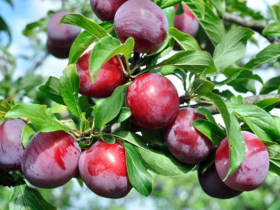
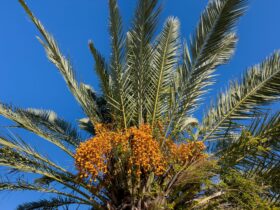
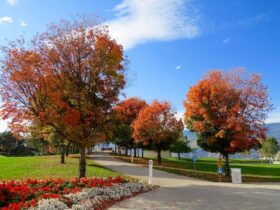
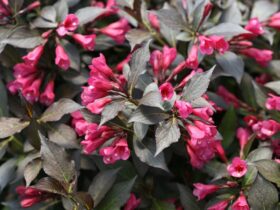
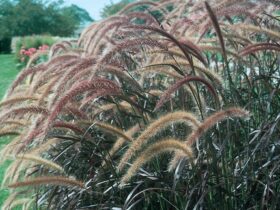
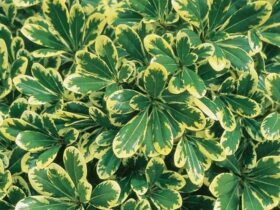


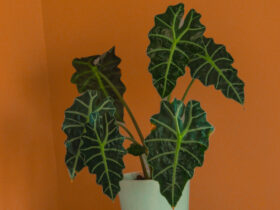

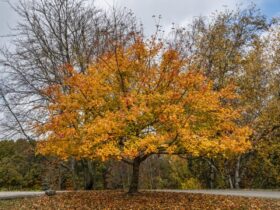
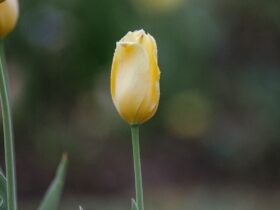
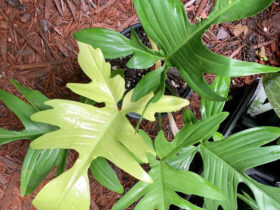
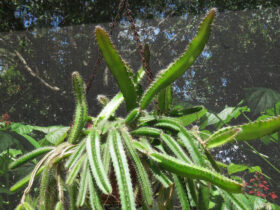
Leave a Reply